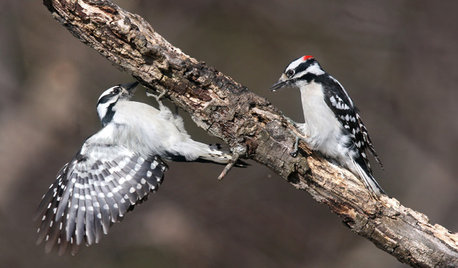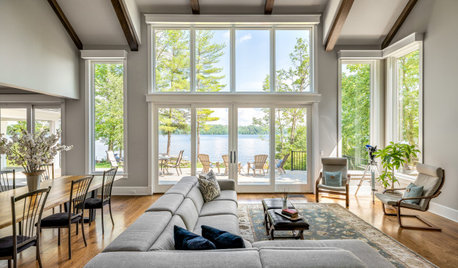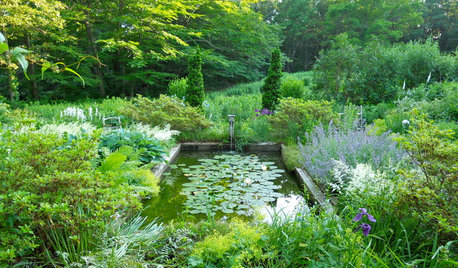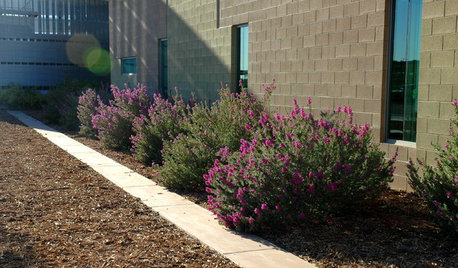Help me identify this shrub
clayinatl
15 years ago
Related Stories

GARDENING FOR BIRDSBackyard Birds: How to Identify Two Common Woodpeckers
Downy and hairy woodpeckers have similar coloration and behavior. But there are two big differences that separate them
Full Story
GARDENING GUIDESHow to Prune Your Flowering Shrubs for the Best Blooms
Less is often more when it comes to properly pruning flowering shrubs. Here’s what to do and why
Full Story
DECORATING GUIDESCould a Mission Statement Help Your House?
Identify your home’s purpose and style to make everything from choosing paint colors to buying a new home easier
Full Story
STANDARD MEASUREMENTSThe Right Dimensions for Your Porch
Depth, width, proportion and detailing all contribute to the comfort and functionality of this transitional space
Full Story
GARDENING GUIDES8 Native Shrubs for Year-Round Bird Feeding
It’s not just about berries. These plants provide insects for birds and seasonal interest for gardeners
Full Story
PLANTING IDEAS5 Reasons to Bring Shrubs Into the Flower Garden
Mix up the garden experience and let the flowers and shrubs play together
Full Story
GARDENING GUIDES10 Drought-Tolerant Shrubs That Thrive in Full Sun and Reflected Heat
Got a hot spot in your garden where plants often die? Try these tough shrubs that add beauty while shrugging off the heat
Full Story
GARDENING GUIDESHow to Avoid Overcrowded, Overpruned Shrubs
Go for a more natural look that’s easier and less expensive to maintain by giving your plants the right amount of growing room
Full Story
TREESHow to Buy Healthy Trees and Shrubs
A healthy young plant with a strong form is more likely to do well in your yard. Here’s what to look for at the nursery
Full Story






bagsmom
Iris GW
Related Professionals
Ashland Landscape Architects & Landscape Designers · Fort Lee Landscape Architects & Landscape Designers · Marco Island Landscape Architects & Landscape Designers · Willowick Landscape Architects & Landscape Designers · Lemont Landscape Contractors · North Canton Landscape Contractors · Oak Forest Landscape Contractors · Parkland Landscape Contractors · Pleasant Grove Landscape Contractors · Delhi Fence Contractors · Golden Fence Contractors · Irvine Fence Contractors · La Grange Fence Contractors · Graham Window Contractors · Sarasota Window Contractorsjay_7bsc
Iris GW
jay_7bsc
laylaa
Iris GW
clayinatlOriginal Author
clayinatlOriginal Author
satellitehead